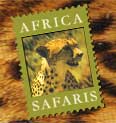The tribes we study are the Hambukushu and Bayei Tribes, Botswana’s foremost basket weavers and wood carvers. These tribes still practice traditional healing methods, subsistence farming and fishing in the Okavango. We also visit Tsodilo Hills to explore the thousands of San rock art sites in the area and learn about the bushlore and nomadic lifestyle of this ancient African tribe, still existing today. Of course, we will do game drives and game walks along the way.
DAY 1: Tsodilo Hills
We depart from Maun at 08:00 this morning, towards the now-dry Lake Ngami - the area that was visited by early European travellers and explorers such as David Livingstone and Charles John Andersson. Andersson canoed up the then flowing river near Toteng, to become the first European to discover the Okavango Delta in about 1753. We continue northwards, past Etosha, right up to the Tsodilo Hills. The hills are one of the more rewarding destinations in Botswana - renowned not so much for wildlife, but for the extensive collection of San (Bushman/ Basarwa) rock art. Some 3 500 paintings have been identified. After an afternoon visit to some of the more accessible paintings we relax around our campfire, and learn more about the area, and the people who left us such a fascinating legacy.
DAY 2: Tsodilo Hills
After an early breakfast we set out on one of the designated trails for a walk (and some climbing) for about three or four hours. This will take us to some of the more inaccessible, and interesting paintings, whilst also allowing us to enjoy some breathtaking scenery. We return to our campsite for a welcome lunch. This afternoon we have a short visit to the local San village, before further investigation of the area. We return to our campsite for dinner and our overnight.
DAY 3: Etosha
After an early breakfast we leave for Etosha. This is the collective name for some 13 villages, a mere 250km north of Maun. Two tribes live and work in this area: the Hambukushu and Bayei. These tribes are the foremost basket weavers in Botswana, who utilise reeds and natural dyes from the Delta. They also do a number of carvings, and there are still some traditional blacksmiths in the area. We will also have the opportunity to spend time with the local farmers, learning about their lifestyle and farming techniques.
DAY 4: Maun
We have the chance to browse and round up our curio shopping this morning, before returning to Maun, where our safari ends, by the early afternoon.




